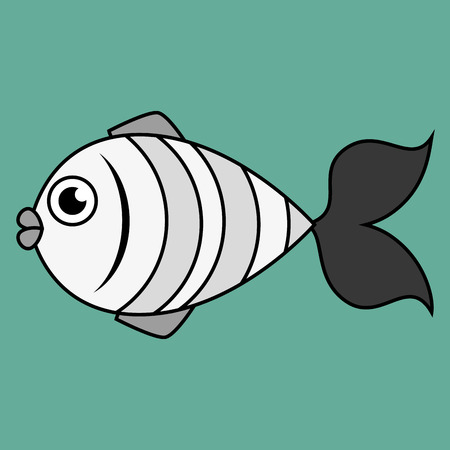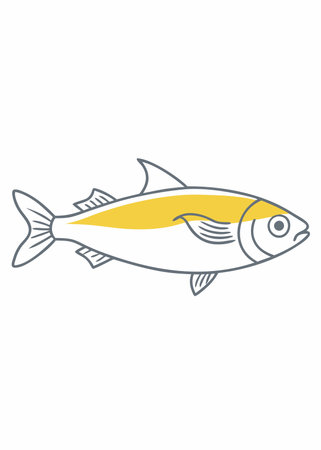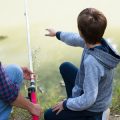Understanding UK Coastal Weather Patterns
When it comes to drift fishing along the British coastline, understanding the country’s distinctive weather patterns is crucial. The UK is renowned for its unpredictable climate, shaped by its maritime position between the Atlantic Ocean and the North Sea. This means that coastal anglers must be prepared for rapid changes, especially with seasonal shifts playing a major role in fishing conditions. In spring and autumn, for instance, the weather can swing from calm to stormy within hours, affecting both safety and fish behaviour.
Prevailing winds are another essential factor. The south-westerly winds commonly experienced in the UK bring moist air and variable sea states, often making drifting more challenging but sometimes also more productive if timed well. On the east coast, northerly winds can stir up sediment and reduce visibility, impacting bait presentation and fish feeding activity. Understanding these wind patterns helps anglers choose optimal fishing spots and plan safe drifts.
Tides are equally influential around the British Isles. With some of the world’s largest tidal ranges—such as those in the Bristol Channel or Morecambe Bay—tidal flow not only affects water depth but also current strength and direction. These elements dictate how your boat drifts and where fish congregate at different times of day. By closely monitoring local tide tables and combining this knowledge with real-time weather updates, UK anglers can dramatically increase their chances of a successful drift fishing session.
2. Drift Fishing Basics in the UK Context
Drift fishing is a time-honoured method along the UK coastline, favoured for its adaptability to variable weather and tidal conditions. Understanding the unique elements of British drift fishing is essential before exploring how coastal weather impacts your strategy. The following sections break down the fundamental aspects, from traditional practices to preferred species and gear.
Local Traditions and Approaches
UK anglers often adopt a hands-on, responsive approach to drift fishing, taking advantage of natural currents and wind to cover ground over productive seabeds. This technique is popular across regions such as Cornwall, Northumberland, and the Solent, where tidal flows dictate much of the fishing rhythm. Many local fishers use small boats or charter vessels to position themselves above reefs, sandbanks, or wrecks, allowing their bait or lures to naturally move with the water.
Popular Target Species
| Region | Common Species |
|---|---|
| South West England (Cornwall & Devon) | Bass, Pollack, Mackerel |
| North East Coast (Yorkshire & Northumberland) | Colefish, Cod, Flatfish |
| Scottish Coastlines | Ling, Haddock, Plaice |
| Southern Shores (Solent & Isle of Wight) | Bream, Tope, Rays |
Common Equipment Used in UK Drift Fishing
| Equipment Type | Description / Local Preference |
|---|---|
| Rods & Reels | Medium-action rods (6-9ft), fixed spool or multiplier reels for control in strong tides. |
| Main Line | Braid (20-30lb) for sensitivity and low stretch; mono leaders for abrasion resistance. |
| Weights & Leads | Varied weights (2-8oz) depending on depth and current strength; watch leads are common for snaggy bottoms. |
| Baits & Lures | Mackerel strips, ragworm, lugworm for bottom feeders; artificial shads or feathers for pelagic species. |
| Nets/Gaffs | Compact landing nets or short gaffs used on smaller boats for secure landing of fish. |
Tactical Considerations Unique to the UK Coastline
The UKs variable tides and strong currents demand a flexible approach. Anglers often adjust their drift speed using drogue anchors or by changing boat orientation relative to the wind. Timing drifts around tidal changes is also critical; many experienced fishers target slack water or the period just after tide turns when fish are actively feeding. Local knowledge plays a big role—learning from charter skippers or seasoned locals can significantly improve your success rate.
Summary: Setting the Foundation for Weather Adaptation
Mastering these UK-specific fundamentals sets you up for success as you adapt your tactics in response to coastal weather shifts. By understanding regional traditions, target species, and appropriate gear selection, youll be better prepared to modify your approach when wind direction or sea state changes—which we’ll explore in subsequent sections.

3. Weather-Related Challenges for Coastal Drift Anglers
Drift fishing along the UK coastline is uniquely influenced by a range of weather conditions, many of which can arise with little warning. Understanding these challenges is essential for both safety and angling success.
Sudden Squalls
British coastal regions are notorious for their unpredictable squalls—short, sharp increases in wind speed that can quickly transform calm waters into turbulent seas. These gusts not only make boat control more difficult but can also scatter baitfish and target species, forcing anglers to constantly adjust their drifts and tactics. Sudden downpours or hail associated with squalls may further impact visibility and comfort on the water.
Choppy Waters
The UK’s exposure to the Atlantic means even moderate winds often whip up choppy conditions, especially around headlands and exposed bays. Choppy water makes it challenging to maintain a steady drift and can tangle lines or dislodge baits from hooks. For less experienced anglers, these rougher seas can be physically demanding, potentially cutting short fishing sessions due to fatigue or seasickness.
Fog
Coastal fog is another common obstacle, particularly in spring and autumn when warm air meets cooler sea surfaces. Fog severely limits visibility, making navigation hazardous—especially if you’re drifting close to rocky outcrops or other vessels. It also hampers your ability to spot bird activity or surface disturbances that might signal fish location, requiring extra caution and reliance on sound signals or GPS equipment.
Combined Effects on Fishing Sessions
Together, these weather challenges demand adaptability from British drift anglers. Conditions can shift rapidly within a single session, affecting where you can safely fish and how effectively you present your bait or lures. Recognising early signs of changing weather allows for timely adjustments—whether that means altering your drift path, changing tackle setups, or seeking shelter until conditions improve.
Practical Takeaway
In summary, being aware of Britain’s variable coastal weather—and preparing accordingly—can mean the difference between an enjoyable day’s fishing and an aborted trip. By anticipating sudden squalls, navigating choppy waters with care, and respecting the risks posed by fog, UK anglers can make safer decisions while maximising their chances of success.
4. Adapting Your Approach to Unpredictable Conditions
UK coastal weather is renowned for its unpredictability, with sudden changes in wind direction, swell, and visibility all posing challenges for drift fishing. To make the most of your session, it’s essential to adjust your tactics, gear selection, and drift techniques according to the day’s conditions. Below are practical strategies tailored for British waters:
Tactical Adjustments Based on Weather Changes
| Weather Condition | Tactical Adjustment | Local Example |
|---|---|---|
| Strong Onshore Wind | Use heavier leads or drogue to slow the drift and maintain bait on the seabed. | When fishing off Chesil Beach, switch to a 6oz grip lead as winds pick up from the south-west. |
| Sudden Downpour | Focus on deeper marks where freshwater run-off won’t cloud visibility; use brightly coloured lures. | Targeting pollack around Plymouth Sound piers after rain with luminous jelly worms. |
| Fog or Reduced Visibility | Fish closer to shore for safety; utilise scent-based baits such as peeler crab or lugworm. | Drifting along the Solent’s shoreline using smelly baits when sea mist rolls in. |
| Tide Change | Time drifts to coincide with slack water for easier control; adjust drift angle with oars or small outboard. | Aiming for slack tide off Whitby when wind and tide oppose each other. |
Gear Selection Tips for Variable Conditions
- Rod Choice: A medium-heavy spinning rod (9-10ft) offers versatility for changing sea states common around the UK coast.
- Terminal Tackle: Carry a variety of weights (from 2oz to 8oz) and both plain and gripper leads to adapt quickly as wind and current shift.
- Lures and Baits: In murky water after storms, opt for mackerel strips or glow beads; in clear conditions, try smaller sabiki rigs or live sandeel.
- Drogues/Sea Anchors: Essential kit for slowing down your drift in strong winds—especially effective when targeting species like bass or cod near rocky marks such as those off Portland Bill.
Modifying Drift Techniques in Response to Local Conditions
Wind-over-tide situations: Use shorter drifts close to the lee side of headlands (e.g., St. David’s Head) to avoid choppy water and maintain lure contact.
Shallow bays vs. Deep channels: In shallow areas like Morecambe Bay, keep drifts short and parallel to sandbanks; in deep-water channels such as The Needles, lengthen drifts but monitor depth closely.
Crowded hotspots: On busy days at Brighton Marina, stagger your starting point to avoid tangling lines with other anglers drifting nearby.
Quick Reference: Matching Tactics to Weather Patterns
| If You Notice… | You Should… |
|---|---|
| Swell building rapidly | Add weight, shorten line, keep drifts perpendicular to waves for better control. |
| Baitfish activity at surface after a warm spell | Switch to surface lures or feathers for mackerel and garfish runs typical along Cornish coasts. |
| Sudden drop in temperature overnight | Fish deeper marks where cod and whiting will be holding tight on the bottom out of cold surface layers. |
Summary Tip: Always check local weather forecasts before heading out, and be prepared with spare tackle options so you can adapt swiftly—the hallmark of a successful UK coastal angler!
5. Safety, Regulations, and Local Expertise
When drift fishing along the UK coastline, prioritising safety is absolutely vital. Coastal weather can be unpredictable—sudden squalls, strong tides, and rapidly changing sea conditions all pose potential hazards. Always check the latest Met Office marine forecasts before heading out and ensure you carry essential safety gear such as life jackets, VHF radios, and flares. Never underestimate the importance of wearing layered clothing to protect against hypothermia in British waters, even during summer months.
Understanding Local Byelaws
The UK has a patchwork of regional byelaws designed to protect fish stocks and promote sustainable angling. These regulations vary by county and can include restrictions on catch limits, closed seasons for certain species, minimum landing sizes, and designated conservation areas. Its crucial to familiarise yourself with the specific rules in your chosen area—ignorance is no defence and breaches can result in hefty fines or confiscation of equipment. The Angling Trust and local fisheries websites are reliable resources for up-to-date information.
Tapping into Local Knowledge
No one understands the intricacies of British coastal drift fishing like local anglers. Building connections at tackle shops or joining regional angling clubs provides invaluable insights on safe launch spots, prevailing weather patterns, productive drifts, and local hazards such as sandbanks or submerged rocks. Seasoned fishers can also share tips on interpreting subtle changes in water colour or bird activity that often precede a shift in weather or fish movement.
Summary: Putting Safety and Knowledge First
Success in UK coastal drift fishing is built on a foundation of safety awareness, strict adherence to local regulations, and learning from those who know the waters best. By respecting these principles, you not only safeguard yourself but also contribute to the sustainability and enjoyment of our treasured coastal fisheries.
6. Maximising Success Throughout the British Fishing Year
Understanding and embracing the UK’s distinctive seasonal weather patterns is key to consistently productive drift fishing along British coasts. Each season brings its own set of challenges and opportunities, so tailoring your tactics throughout the year can give you a real edge.
Spring: Early Movement and Tidal Influence
As temperatures begin to rise, many fish species start moving closer to shore in search of food. Take advantage of increased activity during spring tides, which bring nutrient-rich waters into estuaries and coastal areas. Focus your drifts around these tidal peaks, and use lighter tackle to match the generally clearer water conditions.
Summer: Calm Seas and Diverse Targets
Longer days and more stable weather make summer ideal for targeting a wide range of species. However, calm conditions can also mean clear water, so consider using finer lines and more natural bait presentations. Early mornings or late evenings often see better action as fish avoid midday heat—adjust your drift times accordingly.
Autumn: Changing Winds and Feeding Frenzies
As autumn arrives, shifting winds stir up the coastline, bringing nutrients that spark feeding frenzies among predatory fish. Be ready to adapt quickly—switching lure colours or weights based on water clarity and wind direction can make all the difference. Look for gulls diving or surface disturbances as tell-tale signs of baitfish being chased by larger predators.
Winter: Braving the Elements for Rewarding Catches
Winter weather can be harsh, but it also brings unique opportunities, especially for cod and other cold-water species. Dress for the elements and focus on fishing during milder spells between storms when the sea is settling. Heavier gear and strong leaders help cope with rougher conditions; don’t neglect safety, especially in unpredictable winter swells.
General Tips for Year-Round Drift Fishing
- Keep a detailed log of weather patterns, tide times, catches, and locations to spot long-term trends.
- Regularly check local forecasts and be prepared to change plans if adverse conditions arise.
- Network with other local anglers to exchange insights about seasonal hotspots and effective baits.
Adapting Is Key
The secret to maximising success through the British fishing year is adaptability. By tuning your approach to each season’s weather rhythms—and always respecting local safety advice—you’ll find yourself making the most of every session along our diverse coastline.


